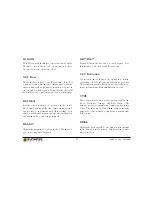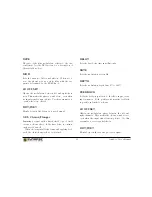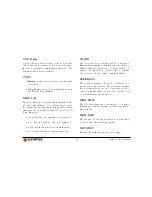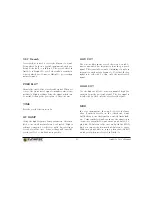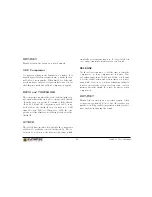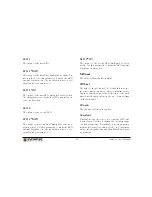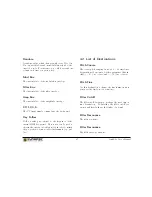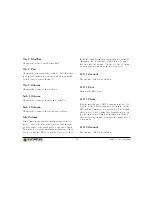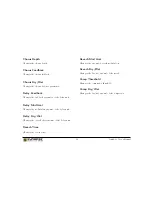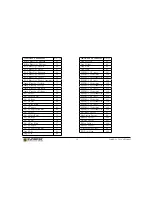
3.8.7 Reverb
A reverb effect is used to create the illusion of a sound
being played back in a spatial environment such as a
living room, hall or cathedral. The reverb effect in
Antidote is designed to give best results for synthetic
sources, which are often more difficult to process than
natural sounds.
PREDELAY
Adjusts the onset of the reverberated signal. When set
to zero, the reverberated signal commences almost im-
mediately. Higher settings delay the signal, which can
be useful to change the perception of the room size.
TIME
Sets the reverb time in seconds.
HF DAMP
Using the high frequency damp parameter, the simu-
lated room’s wall materials can be adjusted. Higher
settings correspond to reflective walls, lower settings
to very absorbent ones. Lower settings will cause the
reverb trail to become dark more quickly.
LOW CUT
The low-cut filter in the reverb effect can be used to
remove unwanted low frequencies from the processed
signal. This is useful for sounds containing strong bass
frequencies, such as bass drums etc. Note that the dry
signal is not affected by this, only the reverberated
signal.
HIGH CUT
Use the high-cut filter to remove unwanted high fre-
quencies from the processed signal. The dry signal is
not affected by this, only the reverberated signal.
MOD
In a real environment, the sound of reverb is always
alive.
Synthetic reverbs, on the other hand, sound
dull if they process the signal in a strictly linear fash-
ion. Using synthetic sounds as input, the situation is
even worse, as synthetic sounds may sound dull to be-
gin with. Modulation is the cure, and with the MOD
knob you can specify how much modulation to apply.
With enough modulation, even a plain sawtooth will
sound great when reverberated in Antidote.
23
Antidote User’s Manual
Summary of Contents for Antidot
Page 1: ...User s Manual...











